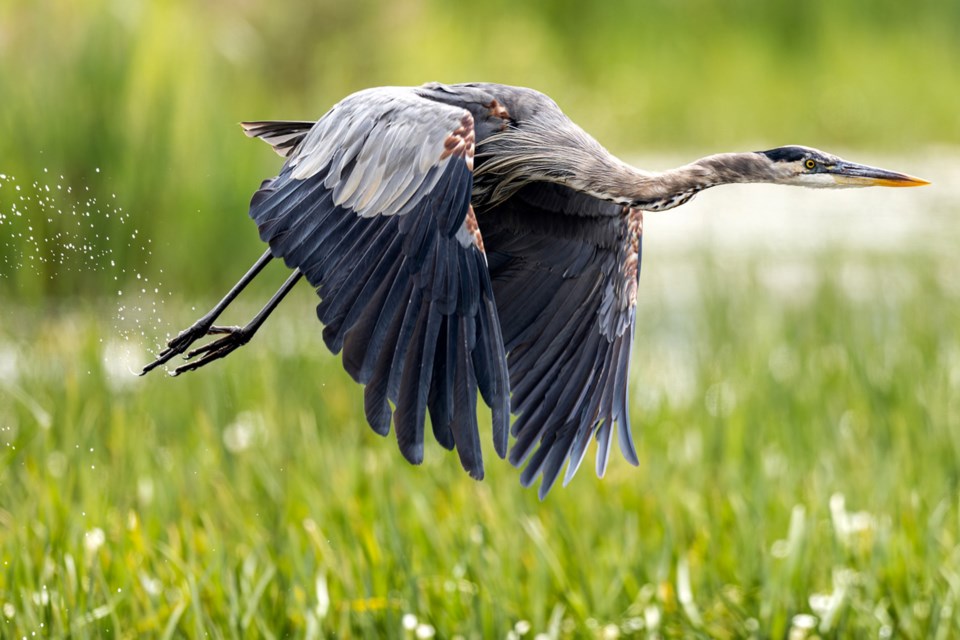If you are a wildlife enthusiast like I am, I highly recommend a road trip that I took last week with my wife, Silvia.
We hopped in our car and drove three hours southwest to the town of Port Rowan, Ont., located about one hour south of Brantford.
We met with a talented photographer from Hamilton, Chris Vickerson, who soon had us walking along pathways surrounded by marshy wetland for almost as far as the eye could see.
I’ve been wanting to meet up with Chris for a while, as his bird photography work is top notch.
The area is home to the Long Point National Wildlife Area (NWA), which sits on Long Point, a sandy peninsula that juts quite a ways out into Lake Erie.
It’s the largest NWA in Ontario and covers 3,284 hectares.
It’s been called one of the most important staging grounds on the continent for waterfowl.
The NWA website says there are hundreds of thousands of migrating birds passing through Long Point every spring and fall, with more than 300 different migratory bird species visiting the peninsula.
We were certainly given a great first impression, as beautiful white egrets and great blue herons were scattered around nearby, and all within reach of our camera lenses.
As we got out of the car, there was even a bald eagle soaring by heading for a distant dead tree to perch on.
This is heaven.
Chris tells me about dunlins, lesser yellow legs, snipes, common gallinules, and other birds that visit there that I had never seen or heard of before. It’s fascinating.
He deftly points out everything that we come across and is well versed in the wildlife that use this irreplaceable habitat every year.
The area boasts a few federally and provincially identified species at risk, such as the king rail, piping plover and prothonotary warbler, and to capture one with a camera would be a great score.
I did catch a glimpse of a warbler, although it was just a Cape May warbler, feeding on a big yellow flower. Common, but still a new bird to me.
After a couple of hours, we change gears and head into a nearby forest.
We are soon looking at the ground on our hands and knees instead of looking up in the sky for birds.
Everywhere we look there are mushrooms of all sizes and colours jutting out of the damp soil and leaf litter or peeking up from a rotting moss-covered log.
I won’t even get into the identification of those as it seems near impossible for a novice like me to differentiate between one kind or another. There are just too many similarities.
Chris goes out of his way to introduce us to the jewel of the forest this time of year — the ‘ghost pipe’ — which is a frail and strange-looking perennial wildflower that gets its name from its shape and pale white colour.
The Nature Conservancy of Canada describes it as “a plant species which does not produce chlorophyll, the green pigment used for photosynthesis. As a result, it is completely white. It obtains energy through myco-heterotrophy — a relationship where plants obtain food through parasitism rather than photosynthesis. This plant relies on a large network of roots and fungi to ‘steal’ energy from surrounding plants.”
This is also a new one for me, this alien-looking plant.
We are also on the hunt for an elusive eastern hognose snake, which Chris found the previous day in these woods, although we struck out on finding it again.
All in all, it was a wonderful way to spend a day and to see up-close many animal species that are not normally found in the Barrie area.
A second excursion to Long Point is most certainly in the cards for us again soon, as this is now the beginning of the prime migration season.
A big thanks goes out to Chris for generously providing his time.
I told him he should offer nature walks for photographers. He’d make a mint.
To see more of Chris Vickerson’s beautiful work, visit his Instagram page @chrisvgonewild

.png;w=120;h=80;mode=crop)

